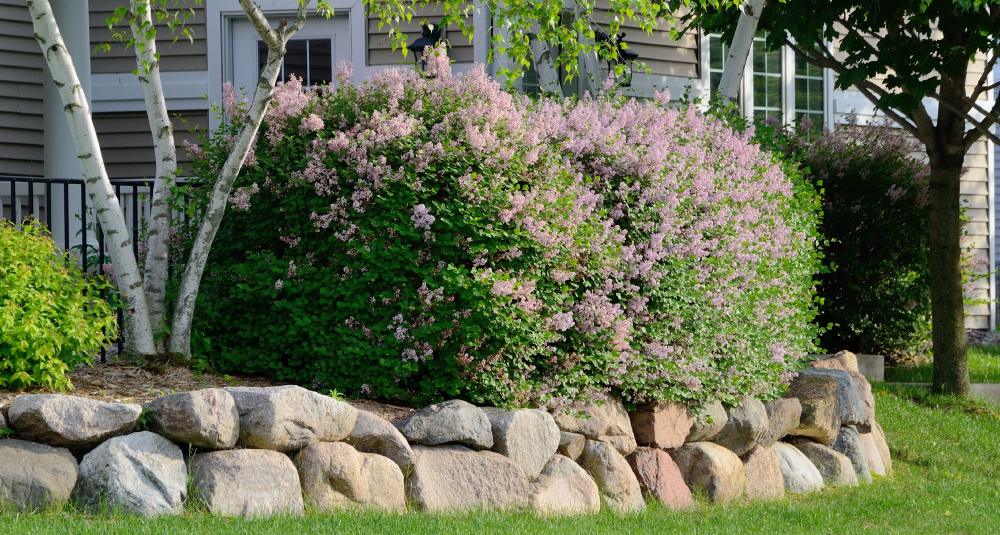
Find a local landscaper
- Inspiration /
- Outdoor projects /
- Gardening & landscaping /
- Retaining wall: Ideas,...
Retaining wall: Ideas, cost & how to build
Used for structural or design purposes, there are 5 main types of rock retaining walls.
Adding a rock retaining wall to your yard is becoming increasingly common in Australia. They can be great for enhancing the aesthetic of your land, to improve the topography of the ground, or to fulfil a need to maximize the land use.
What is a retaining wall?
Retaining walls hold, or retain, soil. They’re commonly used to prevent erosion and can also be used to support a slope, create terraces, and support garden beds. Retaining walls can be purely functional or a combination of functional and decorative.
There are a few different options available to you, depending on the end purpose of your wall (decorative or structural), your budget, and the aesthetic you’re after:
- Wood
- Stone
- Gabions
- Brick
- Concrete
Do I need to hire a professional?
Retaining walls can be tricky to get right, especially when adding a structure onto a slope. Before you start building a retaining wall on your site you need to clearly answer the question – what is it for? To strengthen the slope and keep the soil on it from leaching and slipping? Or for decorating the garden, zoning, and vertical gardening?
There might be legal restrictions with your retaining wall since they’re designed to hold back a great deal of weight. Check and see what the local laws allow, in most cases, you’ll need approval from your local council. If council approval is required, you’ll also need to employ a licensed structural engineer.
Technical calculations are not necessary in the case of purely decorative walls, a landscaper is skilled enough. However, as soon as an exterior wall has a real support function, a study must be conducted beforehand.
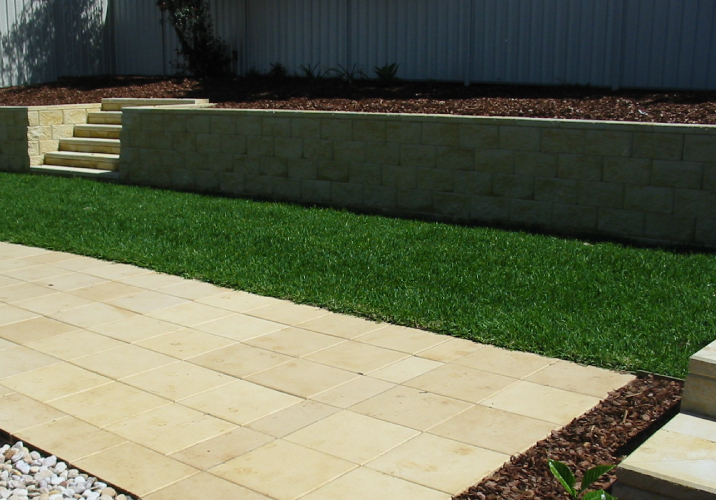
For the construction of a strong and reliable retaining wall that can protect a house or a plot from a landslide from a slope, professionals should be invited. They’ll complete a study of the soil and ensure reinforcement of the slope with a strong mesh or geotextile. A solid concrete foundation is also required on which the retaining wall can be built. In addition to this, work is required to divert rainwater from the slope. A protective wall is a complex engineering structure that requires durability for safety and is not for amateurs.
Wooden retaining wall
Timber retaining walls are a popular choice because they’re easy to set up and install for the DIY gardener, and they’re also very affordable. A durable option, you can expect a timber retaining wall to last up to 25 years before needing to be replaced. Aesthetically, there’s a warmth and flexibility that comes from timber as a material due to the many different types of wood available.
First of all, you’ll need to treat the timber, or purchase pre-treated material, so that it’s protected from rotting caused by the moisture present in soil. In order to maintain the strength and durability of your timber retaining wall, you’ll probably need to re-treat it every so often as well.
To create and install a wall of horizontal logs you need smooth, high-quality dried timber. Logs are usually used, but solid timber is also an option. Glued laminated timber should be avoided as it can delaminate in the rain if your area is open to the elements.
Logs can be installed horizontally or vertically. For horizontal installation, they must be the same size and thickness. Choosing vertical installation allows you to use waste lumber, different in length, and diameter of the log.
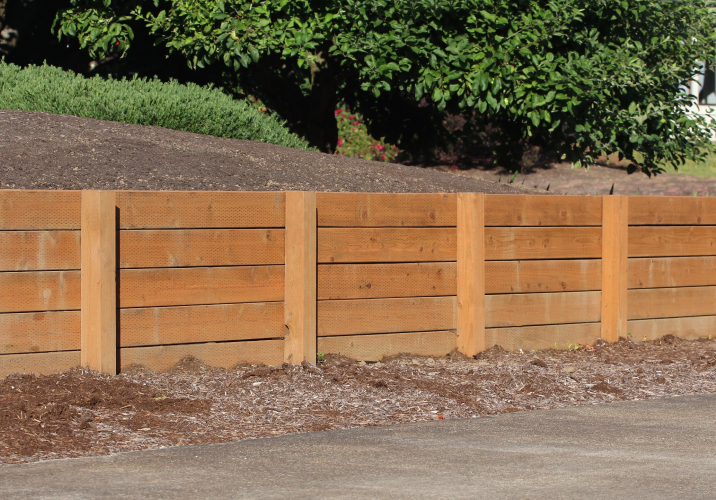
An even more economical option is to use trunks and branches of old trees that have been cut in the area if they are strong enough. The trunks of trees, especially fruit, are never perfectly flat but for a low retaining wall, segments of 40-90 cm in length are needed, you can always select and cut off suitable fragments.The advantages of vertical installation of logs are that this method allows you to make any smooth turns and rounding of the retaining wall.
Stone retaining wall
Natural stone retaining walls are the most reliable style you can select and fit perfectly into any style of garden – though they can be more expensive.
You can use natural stones of any shape: rounded boulders, acute angles of rock or stone blocks of regular shape. Rectangular blocks of sandstone or limestone laid in even rows are most suitable for a regular garden. Boulders of various sizes and shapes are used to create retaining walls that resemble natural heaps of stones. Such structures are characteristic of the natural style.
Construction of a retaining wall of stone begins with laying in a specially dug trench drainage and foundation. The foundation is made of concrete and reinforced with wire and metal construction debris. If the wall is low, then the reason for it can be large stones, half dug into the soil.
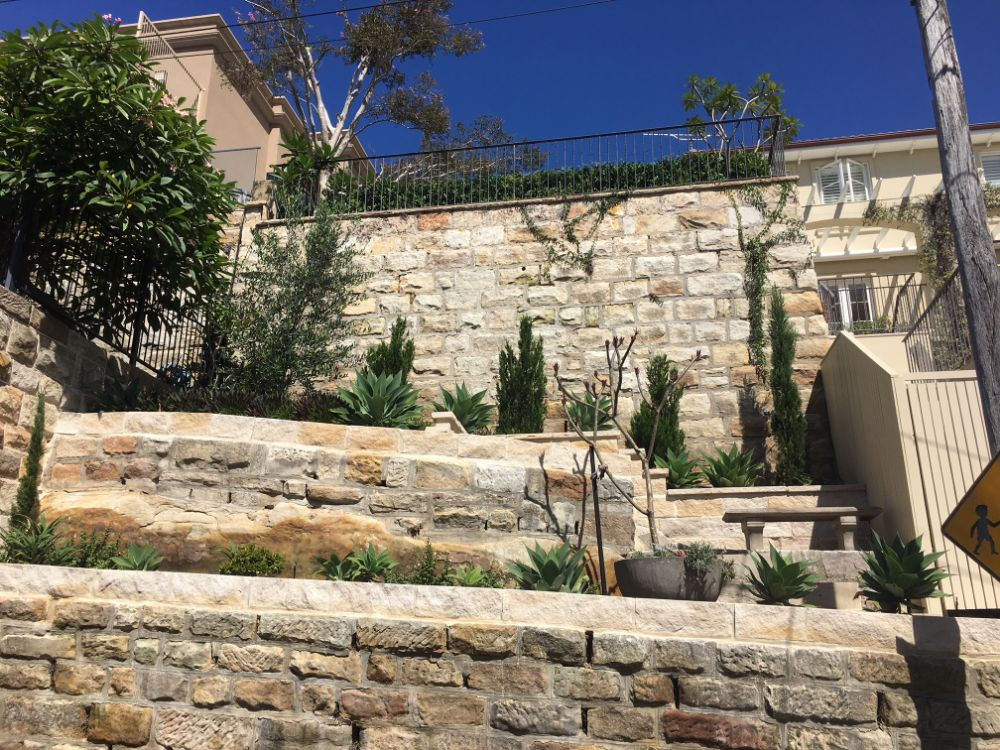
Gabion retaining wall
Gabion walls are durable and strong, able to hold large masses of soil. They are built out of a gabion — or steel-reinforced wire basket — which is shaped to conform to the site, and then filled with multi-sized stones. To construct a gabion wall, you just need to place reinforced, level footings made of concrete on the site, then install the gabion wall on top and fill it with stones. Smaller stones work better because you can just dump them in by the bucket, whereas larger stones need to be put in by hand to fit within the wall frame properly.
Because of its unique construction, a gabion wall has no mortar, it drains well and isn’t vulnerable to water buildup. In addition, it doesn’t wear and crumble as mortar is prone to do. Because of their weight, gabion walls are also good at controlling erosion and will last for years.
In addition to being relatively low cost and quick to install, gabion walls can also provide an attractive feature for your lawn or garden. For added flair, train ground lights over your gabion wall to create a show-stopping, dramatic nighttime effect.
The walls of the gabions are often low; the blocks are installed without a foundation. An inexpensive cobble, pebble or gravel is used as a filler. Gabion walls can be tricky to install, even for an experienced DIYer – so it would be worth chatting to a professional if you go down this route.
Brick retaining wall
Brick is often chosen as a material for the construction of a retaining wall as it’s a relatively inexpensive material, yet very durable able to withstand extremes of temperature, moisture, and weather. Bricks do not warp, rot, or suffer from insect attacks. For a decorative wall, waste, broken, or old bricks can be used. You should also choose this option if your wall will be complex in configuration — with roundings, corners, or projections.
The technology of laying is the same as in ordinary construction, with low walls it’s enough to just lay half a brick. If the wall is a metre or taller – a full brick should be used otherwise it will need to be reinforced.
The foundation of a brick retaining wall requires gravel drainage and ligation – especially for high walls. Behind your wall you’ll also need a solid drainage system, as the bricks don’t not like moisture. Brick retaining walls are also easy to reinforce and create very strong structures. Add a solid foundation or reinforce with steel rods or pre-stressed cables. For extra strength, a brick retaining wall can be built with double thickness.
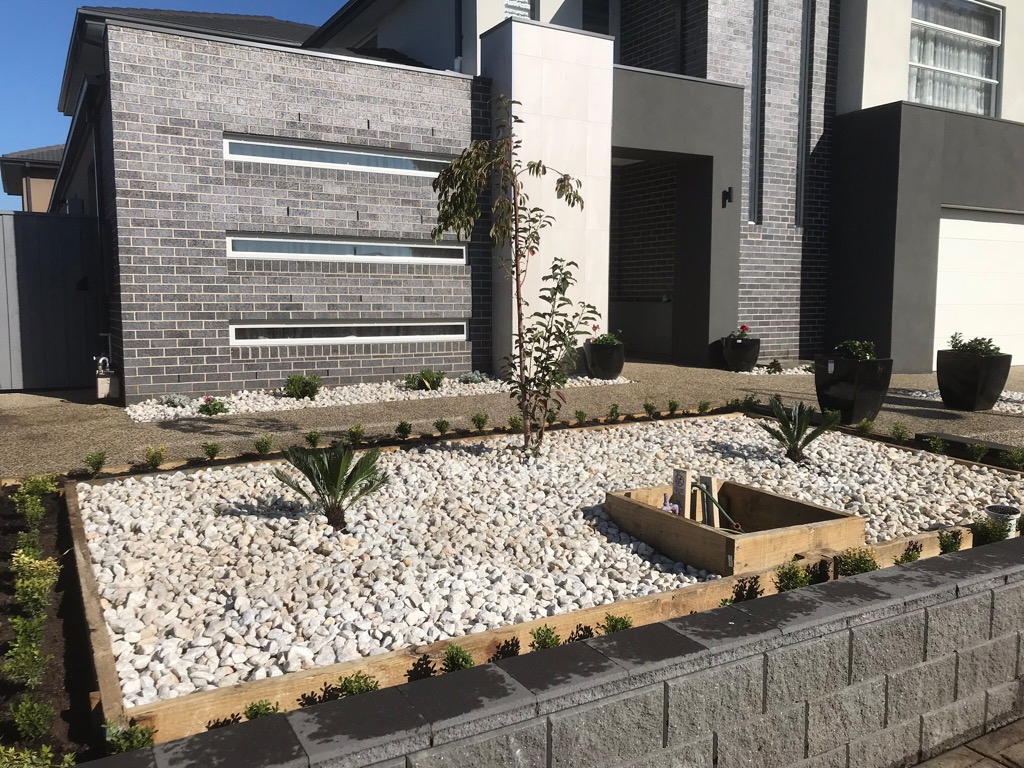
Aside from the relatively low cost, the other main advantage of choosing a brick wall is their ability to be decorated with ties. This means endless possibilities when it comes to injecting colour and texture into your design.
Concrete retaining wall
Concrete is a popular option since it’s an incredibly durable and strong building material. Concrete retaining walls are long-lasting, won’t rot or warp like timber does, and can support a great deal of weight if reinforced properly. They can be made in three different ways: using concrete sleepers, pouring concrete into a mould, or placing several blocks to create the wall. It’s worth noting that a solid concrete wall is almost always heavier than bricks or wood, making a solid and wide foundation a requirement.
Concrete walls can be harsh on the eyes, so you’ll likely need to finish it with some kind of paint, dye or tile.
Concrete retaining walls tend to be a little expensive when compared to timber, but will also last you much longer. Additionally, concrete retaining walls take up more space than timber ones do, making them less well-suited to smaller yards.
Moreover, one of the most critical elements is the footing when building a concrete retaining wall. Footings for retaining walls play a crucial role in providing stability and support to the wall structure. Whether you’re using Besser block retaining wall footings or a concrete footing, proper reinforcement is essential. Steel reinforcement ensures that the footing can withstand the weight of the wall and any load it bears.
For added strength, contractors may also opt to embed rebar into the wall. When done correctly, footings for concrete retaining walls can ensure the durability and longevity of your structure.
Don’t forget about the quality protection of the finished product from soil moisture, and therefore be sure to install a drainage system to preserve the integrity and rigidity of our design.
Related posts
How much will your job cost?
The Oneflare Cost Guide Centre is your one-stop shop to help you set your budget; from smaller tasks to larger projects.



